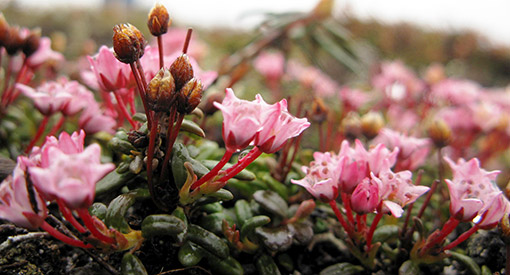
Plants
Wapusk National Park
The area in and around Wapusk National Park is recognized around the world for its significant biological diversity. The park protects important habitats and populations of polar bears, birds and plants. As a result of the retreating Hudson Bay shoreline in response to isostatic rebound (the rising of the land following the glacial period), Wapusk also contains some of the youngest land in Canada.
Labrador tea
Read about the two species of this useful, fragrant shrub found in Wapusk.

But if you think that all of this points to an easy life for plants, you’d be mistaken. In Wapusk National Park, it’s not so easy being green. Plants growing along the Hudson Bay coastline, and for a considerable distance inland, are rooted in shallow soil underlain by permafrost. They are exposed to northeasterly storms and are subject to abrasion from ice crystals driven by winds sweeping across a treeless terrain where the mean annual air temperature is -3.5°C. Conditions are not much friendlier to plants growing farther inland. Although they are more sheltered, plants must grow in peat bogs that are acidic, low in nutrients and poorly drained due to the permafrost below the surface. Despite these challenging conditions, or possibly because of them, many noteworthy species occur within the park, making it a very special place to see plants.
The park is home to more than 700 species of plants! As you travel the landscape, your eyes might fall on dense mats of purple saxifrage, mountain avens and vibrant Lapland rosebay. Under your feet, you may feel the soft surface of peat, formed from the accumulation of partially decayed vegetation in moist environments, which covers approximately 27% of the ground in Wapusk National Park.
In summer, berries are abundant throughout the park, and are a source of food to not only birds and wildlife, but to the people of the area. In late summer and early fall, ripe bearberries, cranberries, blueberries, crowberries, cloudberries and raspberries are abundant.
As the late summer frosts arrive, the landscape changes once again and the park receives a rush of colour. The arctic bearberry leaves turn a deep bright red, the tamarack trees become golden and the lyme grass turns to pastels of yellow and green as the landscape prepares for another long frigid winter.
Related links
- Date modified :